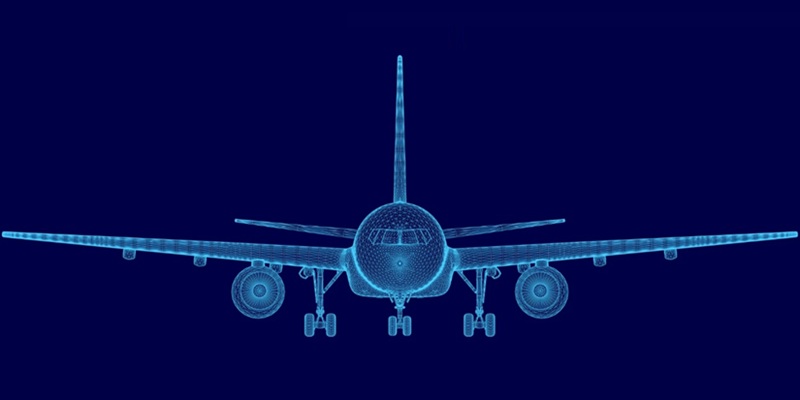Schedule a Call Back
How trade wars and geopolitics are reshaping India’s growth story
 Articles
Articles- Sep 27,25

- Russia–Ukraine War: For India, the war turned Moscow into its biggest crude supplier, accounting for 35% of imports in FY24 - up from less than 2% before the conflict. Cheap Russian oil helped India control inflation, but it also deepened strategic dependence on an unpredictable partner. At the same time, disruption of sunflower oil and fertilizer exports from the Black Sea region drove up food inflation in India.
- Middle East & Red Sea Attacks: Houthis striking commercial ships in the Red Sea forced shipping companies to reroute vessels around the Cape of Good Hope. For Indian exporters, this meant freight rates jumped by 130% and delivery times stretched by up to two weeks. The Middle East supplies nearly half of India’s oil; instability there translates directly into higher fuel and power bills back home.
- Taiwan Strait Tensions: Taiwan produces 60% of the world’s semiconductors and 90% of the most advanced chips. For India, which imports 65% of its semiconductors, any disruption would freeze industries from automobiles to smartphones. This vulnerability is what spurred the ?76,000 crore India Semiconductor Mission, with support from the US and Japan.
- Export Vulnerability: Nearly one-third of India’s exports go to just two regions — the US and the EU. With Washington imposing steep tariffs on key Indian goods like apparel and jewellery, order volumes could fall by 70%, trimming as much as 0.5% of GDP.
- Energy Inflation: India imports nearly 88% of its crude needs. Every $10/barrel increase adds $15 billion to the import bill and raises inflation by 30–40 basis points.
- China Dependence: From electronic components to active pharmaceutical ingredients (APIs), China remains India’s biggest supplier. In pharma, 70% of APIs come from China - a major strategic vulnerability.
- Business Uncertainty: Rising tariffs and investor hesitation mean global companies are cautious about placing long-term bets in India.
- China+1 Momentum: Apple assembled $22 billion worth of iPhones in India in FY24, nearly 14% of global output. Smartphone exports crossed $15 billion, half of which came from Apple alone. Foxconn, Dell, and Micron are lining up billions more in investments.
- Energy Diversification: Discounted Russian oil has cut import bills, while India has surged to become the 4th largest renewable energy market globally, with over 180 GW of installed capacity.
- Strategic Partnerships: The India–UAE CEPA is already boosting duty-free access, while the Quad has deepened tech and defence collaboration.
- Services Resilience: With GCCs and IT exports expanding at 8–10% annually, India’s digital backbone provides stability even in turbulent times.
- Short term: Inflation pressures from oil, fertilizer, and food imports; EU CBAM threatening textiles; US tariffs hitting merchandise exports.
- Medium term: $15–20 billion of annual FDI inflows expected into electronics and auto components as global supply chains diversify; India–GCC and India–EU trade deals likely to unlock fresh markets.
- Long term: India’s share of global manufacturing could rise to 5–6% by 2030, worth $500 billion in output. Combined with IT and digital services, India could become a $7 trillion economy by 2030, the world’s third-largest.
- Accelerate FTAs: Closing deals with the EU and ASEAN is critical. India currently has FTA coverage for only 30% of global GDP, compared to Vietnam’s 70%.
- Build semiconductor and energy self-reliance: Expand fabs, secure rare earths, and boost solar module manufacturing.
- Fix logistics: India spends 13–14% of GDP on logistics versus 8–9% in advanced economies. Bringing this down to 9–10% could save $50 billion annually.
- Reduce China dependence: From APIs to electronics, domestic capacity building is non-negotiable.
- Diversify markets: Africa and Latin America are emerging as new $100 billion opportunities.
- Risk-proof supply chains: Multi-country sourcing and AI-driven supply chain monitoring should be the new norm.
- Invest in R&D: India spends just 0.7% of GDP on R&D versus OECD’s 2–3%. Scaling this up is vital for EVs, biotech, and aerospace.
- Bet on digital + green: Position India as a hub for renewable energy equipment and digital exports.
Related Stories

Make in India in shifting world: Manufacturing for resilience, global leadership
India stands at a defining moment where disruption in global trade, technology, and supply chains offers both risks and opportunities for manufacturing-led growth. Rohit Chandra, Co-Founder & CEO, O..
Read more
India’s specialty chemicals sector gears up for global transition
India’s specialty chemicals industry is transitioning from a fragmented, domestic-focused market to a global hub, supported by policy reforms, R&D investment, and rising export opportunities. Dr A..
Read more
Five Reasons Why Manufacturing Careers Stand Out
Manufacturing is emerging as a dynamic career choice, offering innovation, stability, global opportunities, and purpose-driven work across diverse disciplines. Mukesh Vasani, Founder and Chairman, A..
Read moreRelated Products

Heavy Industrial Ovens
Hansa Enterprises offers a wide range of heavy industrial ovens.

High Quality Industrial Ovens
Hansa Enterprises offers a wide range of high quality industrial ovens. Read more

Hydro Extractor
Guruson International offers a wide range of cone hydro extractor. Read more















